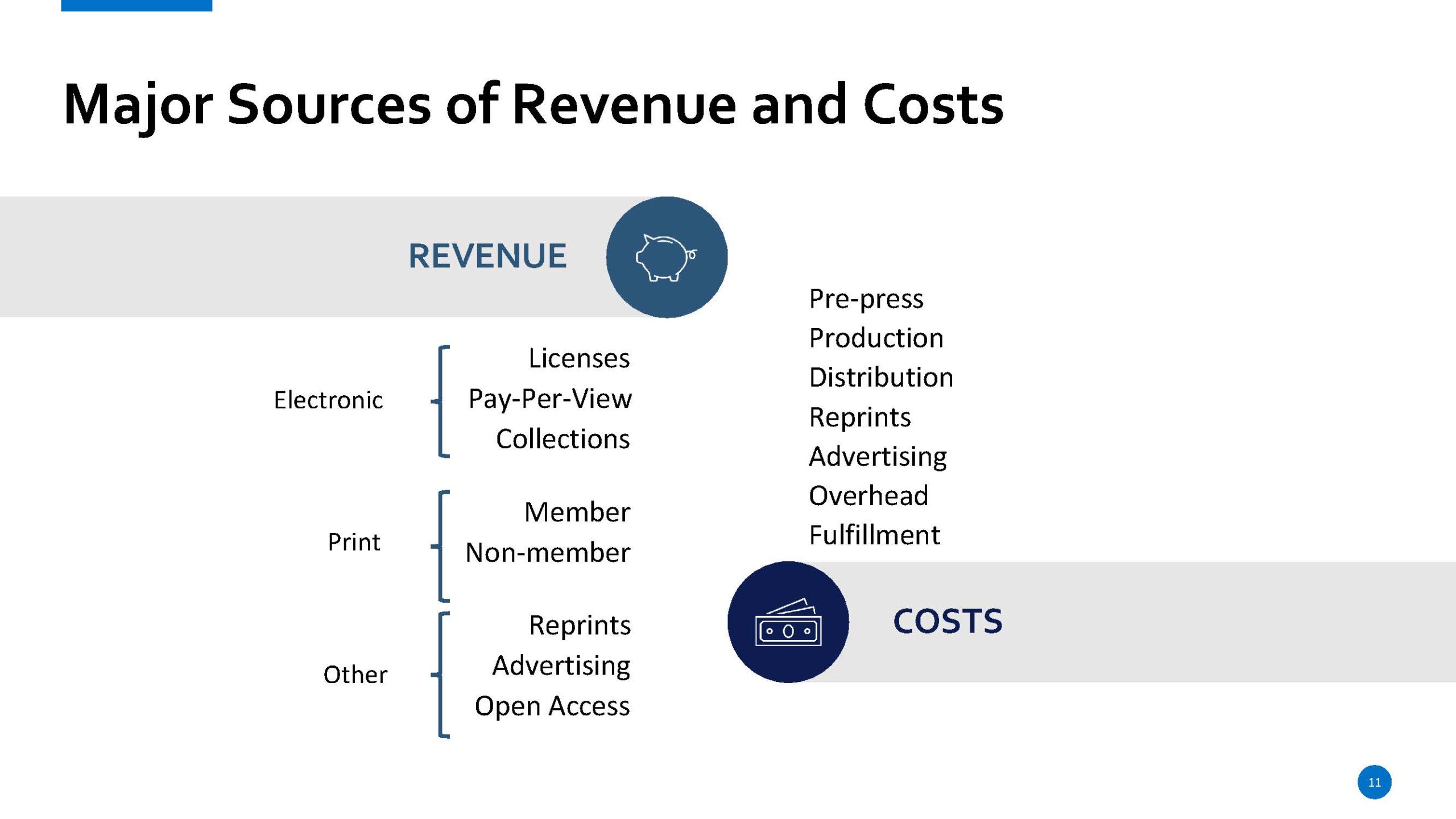MODERATOR:
Dana Compton
Managing Director and Publisher
American Society of Civil Engineers
Reston, Virginia
SPEAKERS:
Kathleen Gaffney
Consultant
KG Publishing Solutions
New York, New York
Erin Landis
Vice President of Publications
American Gastroenterological Association
Bethesda, Maryland
Dana Compton
REPORTER:
Heather DiAngelis
Associate Publications Director, Transportation Research Board
National Academies of Science, Engineering, and Medicine
Washington, DC
At the Council of Science Editors’ 2021 Annual Meeting, 3 speakers from diverse organizations presented at the virtual session with the intent of providing an introduction to financial models, budgeting, profit and loss statements, and journal health assessment in order to maximize publication success.
Kathleen Gaffney, Consultant at KG Publishing Solutions, kicked off the session with an overview of how to become involved with finances within an organization, even if it means starting small. She noted that one of the most important aspects for starting is understanding your organization’s journal goals and strategies. Every journal is unique in its finances; for instance, some journals are mission-driven while others are profit-driven. She went on to explain the difference between self-published societies (in-house publishing operations in which the society collects all revenue and pays all expenses) and contract publishing (in which a society is responsible for editorial content but a publisher collects all revenue and pays all expenses while making some payments to the society). Next, she discussed different journal ownership models for commercial and university publishers, including proprietary, society, society-controlled, and society-affiliated.
Gaffney then introduced various journal publishing business models for obtaining revenue, including traditional, Open Access, and controlled circulation; each of these models has its own types of direct and indirect expenses. In general, if revenue is greater than expenses, the model is profitable; if revenue is less than expenses, the model is not profitable. Her final advice for further understanding the business side of journals, or for moving into a management or publishing role, was to ask a lot of questions, find a financial mentor, get to know the sales team, and learn from the professionals within the scholarly publishing industry.
Next, Erin Landis, Vice President of Publications at the American Gastroenterological Association, gave the perspective of a society that works with a commercial publisher. She began by discussing the importance of enforcing the publisher’s financial responsibility. “By reviewing your publisher’s financial statements,” she noted, “you can hold them accountable, ask questions, and note any discrepancies or concerns.” Furthermore, financial statements from the publisher allow for the ability to develop budgets, forecast revenue, identify trends, and compare the success of the journals in your portfolio. She ended with tips for financial fluency, such as don’t be afraid to ask questions, operate in a silo, think you can’t learn, or ignore financial information, but do ask questions, engage with experts, educate yourself, and make a habit out of reviewing finances.

The final speaker was Dana Compton, Managing Director and Publisher at the American Society of Civil Engineers, who provided the perspective of a self-published society. “For me,” Dana said, “successful budgeting includes understanding what your target is…, looking at data and trends…, and critically reviewing your progress.” She noted that budgets are important because they guide decision making for the upcoming year. The kinds of decisions a society must make are dependent on how publications fit within the society. Important questions to consider are what is the publication’s role in the society, what are the revenue and return expectations, is the society more heavily focused on mission or profit, and what are the member benefits?
Compton advised that a great starting place for creating a budget is to look at the previous year’s budget and analyze how reality shifted from expectations. From there, consider trends, vendor rates and contracts, operating expenses versus development work, and the department or society’s strategic plan. She went on to say that successful budgeting entails constant vigilance throughout the year. She ended by remarking that a good relationship with the finance department will help you understand your account codes, accruals, revenue recognition, “invisible” expenses, and more. All of these factors lead to data-driven decision making that contributes to a more reliable and stable budget.
The session concluded with a brief question-and-answer period that touched on budgeting new products and the frequency of transmitting financial information from publishers to societies.
